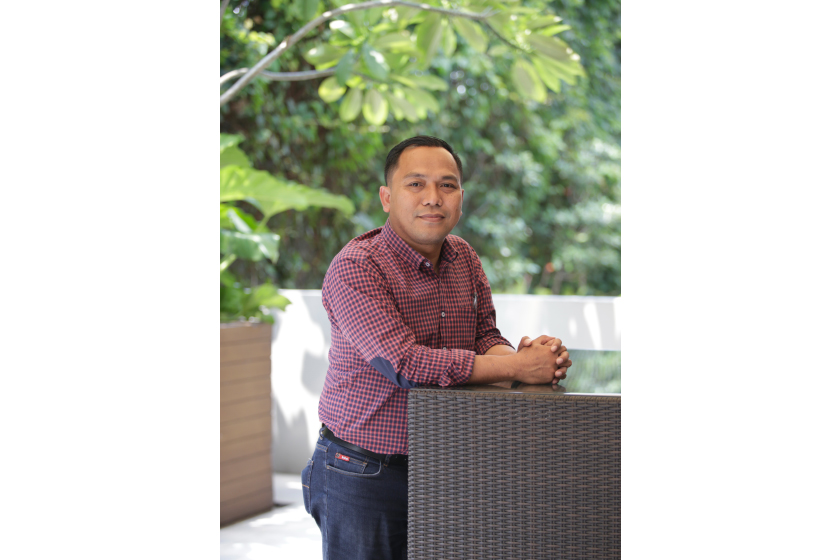
03 March 2025
Peacebuilder Nerlian Gogali Grows a Wave of Strong Women Advocates in Poso
What began on Nerlian Gogali’s veranda as a space for women to heal and learn after conflict i... Read more
The Australia Awards are prestigious, transformational scholarships and short courses offered to emerging leaders for study, research and professional development in Australia

25 November 2019
 Working together to mitigate future liquefaction disasters
Working together to mitigate future liquefaction disasters
Australia Awards alumnus Dr Ardy Arsyad is determined to find the cause of the largest liquefaction disaster in modern history, in an effort to prevent the same devastation from happening in cities across earthquake-prone Indonesia. This research project was made possible through funding from the Australian Government through the Alumni Grant Scheme and the Indonesian Government through the National Center for Earthquake Studies, the Ministry of Public Works and Housing.
On 28 September 2018, an earthquake of magnitude 7.5 hit the city of Palu and the Donggala Regency in Central Sulawesi, claiming an estimated 4,340 lives. It was the deadliest earthquake worldwide that year. Aside from triggering a tsunami, the earthquake also caused major soil liquefaction in areas surrounding Palu. Many buildings were submerged by the ensuing mudflow, causing hundreds of deaths with many more missing.
Soil liquefaction is a state where the ordinarily solid soil behaves like a liquid (mud). This occurs when a saturated or partially saturated soil substantially loses strength and stiffness in response to an applied stress such as shaking during an earthquake. Water in the pores below then rise to the surface, causing the liquefaction.
Survivors of the mudflow in Palu recalled mud as high as two metres coming out from the ground. Areas up to 202 hectares—the size of more than 280 football fields—shifted. Entire villages sank into mud. The shifting also caused hundreds of houses to crash into each other and roads to twist.
“Researching the cause of liquefaction of the Palu earthquake is imperative as Palu shares geological similarities with other cities across Indonesia,” stated Dr Ardy, who is Assistant Professor of Geotechnical Engineering at Universitas Hasanuddin, Makassar, and obtained his Master of Engineering Science under an Australian Government-funded Australia Awards Scholarship at the University of Adelaide in 2008.
“Cities in Sumatra are situated within the Great Sumatran fault, which shares similar characteristics with the Palu Koro fault where Palu is located. The same goes for cities within the Gorontalo fault. Even cities in the eastern part of Indonesia such as Ambon and Manokwari could benefit from this research,” said Dr Ardy, who is also an alumnus of the Australian Government funded Endeavour Postdoctoral Fellowship at the University of Adelaide in 2015.
Dr Ardy reached out to his academic supervisor at his alma mater. Universitas Hasanuddin and the University of Adelaide have collaborated on projects since the 2000s, and in 2019, the two universities began collaborative research into what caused liquefaction at such a massive scale in areas surrounding Palu. The team is also working with the Australian National University and Ehime University from Japan.
In June 2019, the team conducted field surveys to collect topography data and soil sampling, studying the mechanical and physical properties of the soil. By October 2019, they discussed their findings in a symposium attended by representatives and stakeholders from various Indonesian government institutions.
The team determined that the liquefaction was caused by water saturated gravely sand located three to four metres below the surface of thin clay. When the earthquake occurred, the gravely sand liquefied, causing the soil’s shear strength to plummet and the layer to slip. This resulted in floating blocks of soil shifting hundreds of metres. The team found that the areas affected were all agricultural fields that were irrigated through an irrigation system built in the 1970s, which didn’t use concrete base to provide a barrier to water.
In 2020 they will create a synthetic version of the soil samples at the University of Adelaide to test their hypothesis in the laboratory using computer simulation. This will enable the team to assess which out of the possible solutions—such as deep extraction wells, ground compaction, and sub drainage—would work best to mitigate liquefaction in areas that share similar soil and geological characteristics as Palu.
“In the meantime, there are alternative solutions that can be implemented, such as digging wells to lower water levels, adding concrete as a base in the irrigation system to create a barrier to water, or by restructuring the fields to ensure water isn’t concentrated in just one area,” explained Dr Ardy.
“If we can find the cause of liquefaction in Palu, we can mitigate the same disaster occurring in those cities. We can take measures to lessen the devastating impact.”



Photos courtesy of Dr Ardy Arsyad
Share this article on:
 Related Articles
Related ArticlesThis website uses cookies to improve your website experience. We may also use cookies to analyse website data so that we can improve our online services. To find out more visit our privacy policy.
